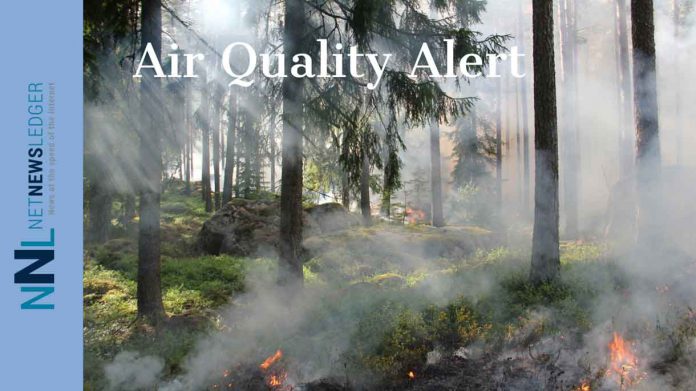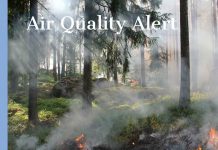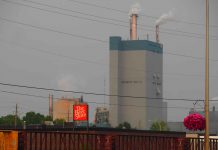WINNIPEG – ENVIRONMENT – A cold front sweeping through Manitoba this morning is set to carry smoke from wildfires located in northern Saskatchewan, resulting in extremely poor air quality and reduced visibility across most of western and southern Manitoba today. The situation calls for immediate attention and precautionary measures.
There are alerts issued by Environment Canada across southern Manitoba right up to the Ontario border. It is likely the smoke will be in parts of Western Ontario by later today and into the rest of the week.
The nature of air quality and visibility affected by wildfire smoke is characterized by fluctuations over short distances, often varying considerably from hour to hour. As the front carrying the plume of smoke approaches, it is expected that conditions will swiftly deteriorate.
The arrival of smoke is anticipated in the Red River Valley around noon, with its impact likely to be felt throughout the region. The entire southern Manitoba area should experience improved conditions by Thursday morning, as the plume of smoke exits the province and moves into the United States.
It is important to note that even at low concentrations, wildfire smoke can pose health risks for everyone. People with lung disease, such as asthma, or heart disease, along with older adults, children, pregnant individuals, and outdoor workers, are particularly vulnerable to the health effects caused by wildfire smoke. If you fall into any of these categories, it is advisable to consult with your healthcare provider to develop a management plan specifically tailored for wildfire smoke events. Additionally, ensure you have an adequate supply of necessary medications at home, and always keep them on hand during wildfire season.
If you find it uncomfortable to breathe or experience any signs of illness, it is recommended to reduce your activity level or stop altogether. Contact your healthcare provider or local health authority if you develop severe symptoms or require medical advice.
Monitoring your symptoms is crucial during such conditions, and it is recommended to regularly check the Air Quality Health Index (AQHI). Keep in mind that individuals may respond differently to smoke exposure, with mild irritation and discomfort being common and typically subsiding once the smoke clears. Staying well-hydrated by drinking plenty of water can assist your body in coping with the smoke.
For those with a home HVAC system, it is advisable to use the highest rated MERV filter compatible with your system, ideally rated 13 or higher, and set the fan to recirculate air continuously. Portable High Efficiency Particulate Air (HEPA) air cleaners can also be utilized. To maintain a comfortable indoor environment, it is recommended to keep doors and windows closed, provided the temperature inside your home is suitable.
The severity of the air pollution caused by the wildfires necessitates proactive measures from all individuals. By taking necessary precautions, we can collectively minimize the impact of poor air quality and safeguard our health during this challenging period.





